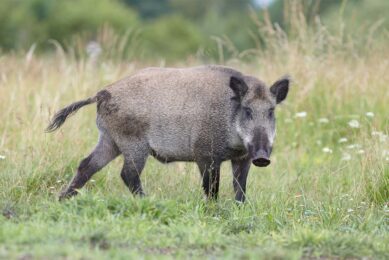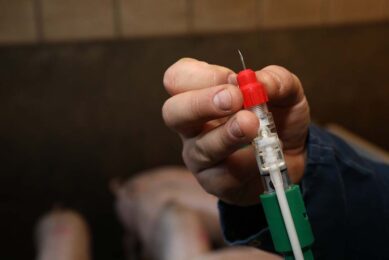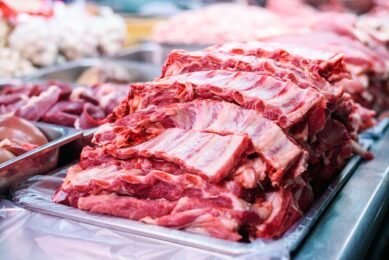Russia embraces its new global role in pork

For decades after the collapse of the Soviet Union, Russia was one of the biggest importers in the global pork market. Those times are over now, as the Russian pig industry has not only secured self-sufficiency, but also managed to become a low-cost producer. Where to next? Sergey Yushin of the National Meat Association explains.
The Russian National Meat Association (NMA) is one of the country’s biggest and most powerful unions of farmers and meat processors. Liaising with the government, the NMA puts a lot of effort into making the domestic pig industry more efficient, to promote Russian pork in overseas markets and to boost sales to non-Russian customers. The country has all it needs in order to become one of the world’s strongest pork exporters, Sergey Yushin, chief of the executive committee at the NMA, believes.
Let’s first focus on current events. What impact has Covid-19 had on the Russian pig industry?
“So far, the negative impact has not been as strong as in some other segments, for example the beef industry. The crisis has primarily affected the hospitality industry, which is not a major sales channel for pork in Russia. We see that pork sales in Russia are up thanks to low prices. In the first four months of 2020 the average price for pork in Russia went down by 10%.
Covid-19 has not disrupted operations in Russian slaughterhouses, as it has in some other countries, including the US
“Additionally, Russian companies have to bear high costs in order to not let the virus penetrate their production facilities. With production costs being as much as 15% higher now compared to the previous year, and in the context of falling prices, some companies may make losses. Covid-19 has not disrupted operations in Russian slaughterhouses, as it has in some other countries, including the US. And yet, we may experience a negative impact from the pandemic in future. In particular, it may affect the demand for sausages in the Russian market and hence the demand for pork.
“It is likely we are entering a difficult period of enhanced price competition between poultry and pork. Russian customers will be more focused on calories than on brands; they will begin paying less attention to packaging. This is likely to prompt producers to adjust their product range, introducing products in simpler packaging. However, it is hard to forecast what will actually happen. We know neither the power nor the length of the pandemic.”

Covid-19 Up-date
What impact is the pandemic having on the global pig sector and how are they dealing with it.
What is the current self-sufficiency rate in the Russian pork market?
“After 15 years of massive investment exceeding US$ 10 billion, Russia is producing pork in the amounts and varieties needed to fully meet domestic demand. In 2018, imports and exports were equal. In 2019, we increased production by 150,000 tonnes compared to the year before, while exports grew to 90,000 tonnes. We experienced some saturation in the market, due to a slight increase in domestic demand. That affected prices, which have been falling drastically since late 2020.
“As for regional distribution of production: it is well balanced. Indeed most production is concentrated in the European part of Russia where a large part of the population is located. The Central Federal District [around Moscow, PP] accounts for roughly 40% of the established pork production capacity, but the well-developed logistics system makes it possible to supply pork to remote regions.
“We see some reduction in pork production in the Far East due to outbreaks of African Swine Fever (ASF), but there are some major projects underway there. We expect no shortage; rather, we expect a surplus of pork there, since those projects were laid down with excessive capacities to be able to export pork to China.”
How attractive is investing in Russia’s pig industry, given that some Russian pig farms closed out 2019 with losses?
“2019 was another good year for the industry. Wholesale prices for pork carcasses became rather low only by the end of the year. And it mostly hurt those producers who had only recently started production and still had to pay interest and return investment loans to their banks.
“In addition, many companies are vertically integrated which adds to their stability, though it is obvious that old pig farms and a lot of backyard production will go out of business. Our companies are constantly trying to lower production costs and increase efficiency. The cost of production at modern facilities is around US$ 1.1–1.2/kg live weight. The price for grains and pig feed is not low, but it is stable, plus the expanding export opportunities offer room for profitability growth.
In spite of the current price situation, the overall investment in the Russian pig industry is expected to be around 200 billion roubles
“In general, things are complex, since so far we have not been able to reach out to foreign markets that can purchase decent volumes. In 2020, we expect new farms to be completed with a total capacity of around 300,000 tonnes. Some outdated farms with poor efficiency levels will close down.
“In spite of the current price situation, the overall investment in the Russian pig industry is expected to be around 200 billion roubles (US$ 3.3 billion) by 2023. Taking into account the market conjuncture, some companies may decide to put some projects on hold.”
Are there any major changes with regard to the pig industry?
“Starting from 2019, state-subsidised soft loans are no longer issued for the construction of new pig farms. This was a very good decision, because there is no need to create additional pressure on the market. It is important that the authorities refrain from taking any steps that will negatively affect production costs, in particular through an increase in prices for feed additives and veterinary drugs.
There is also uncertainty about new environmental requirements for Russian pig farms, specifically that treat them as being in the highest class of danger. This creates additional costs and we believe it is unjustified.
And there is the question of measures the government is taking in regard to tackling ASF. A modern Russian pig farm with 2,750 to 5,000 sows has to spend up to 50 million roubles (US$ 800,000) protecting itself against ASF and maintaining additional biosecurity measures. With a more effective fight against the disease at the state level, this figure could be much lower.
It is worth mentioning that the government puts a lot of effort into opening new markets for Russian pork. We also expect new legislation in 2020 which will tackle a bunch of acute veterinary and traceability issues.”
What will happen with backyard farms in Russia?
“Around 2000, many backyard farmers fed their pigs with feed they stole from industrial farms or other places where they were employed. They were profitable because of the stolen feed at their disposal. Nowadays, industrial farms take serious steps to prevent stealing, plus it is often prohibited for workers at industrial farms to run backyard farms, because this increases risks of ASF occurrence at the industrial facilities.
There is also a demographic factor, as the new generation is reluctant to live this way. In addition, when new jobs with decent wages are created in the countryside, people don’t need to raise pigs to make a living. The decline in backyard production began long before the ASF epidemic in Russia and the rapid growth in industrial pork production. In 2005, backyard farms in Russia produced about 1.1 million tonnes of pork or more than 70% of total production, and at that time we forecast that by 2020 this figure would fall to 350,000 tonnes, so they would account by then for less than 10% of the overall production in the country.
This forecast turned to be rather precise. Yes, there are still remote villages located many kilometres away from production facilities where people still raise pigs for sale or their own consumption. So the backyard farms will not die out completely. We hope though that there will be at least some control, because now it is a complete mess – their pigs are free to run in the woods and mate with wild pigs, increasing epizootic risks.”
It is important to say that in the face of ASF, Russia not only managed to save its industrial pork production, but also to expand it
What are the prospects of tackling ASF in Russia?
“There are positive developments, as companies have taken serious steps aimed at preventing new ASF outbreaks. Authorities throughout Russia have become more experienced in dealing with this issue, though the picture is far from ideal. Basically, just like Eastern Europe and South East Asia we are doomed to have sporadic ASF outbreaks in the coming years.
Yet, it is important to say that in the face of ASF, Russia not only managed to save its industrial pork production, but also to expand it. We have established a regionalisation programme, which means we can guarantee ASF-free pork supply from the regions free of the virus. We have also implemented compartmentalisation, meaning that every company in the supply chain can receive its own biosecurity status defining how well it is protected against ASF, and this is given not only to pig farms, but also to processing units, warehouses, etc.
In addition, we have introduced a new state data system of electronic traceability – Mercury – which makes the livestock and product supply chain fully transparent. This will enhance the effectiveness of our fight against ASF and other diseases. As for a vaccine against ASF, I recently talked to Dr Kolbasov, who is in charge of this project, and he said that from an economic point of view, the development of the vaccine is probably senseless, because the cost of vaccination would be higher than possible risks. But scientists are still looking for an efficient way to combat ASF.”
What are the export prospects for the Russian pig industry?
“A lot of hopes are focused on the Chinese market. This country consumes a lot of everything, including pork and pork offal, and given the geographic proximity, exports to China could be an important factor to achieve comfortable pork prices in Russia.The average pork price in China is 2.5 times higher than in Russia. Nevertheless, trade negotiations with China are complex. We spent six years getting access to the country’s poultry market, and there is no decision on pork access on the horizon.
Exports to China could be an important factor in achieving comfortable pork prices in Russia
“As far as we know, the Chinese ministry of agriculture does not approve of the Russian regionalisation system, even though it accepts a similar system in the EU and purchases large quantities of pork from Europe. I’m pretty sure that the government agencies of Russia and China could design a system ensuring supplies of safe pork, but so far this has not been happening.
Other promising markets are South Korea and Japan, but they also remain closed to Russian pork producers. We will concentrate on available markets in Africa, as well as Vietnam, Hong Kong, Singapore, Venezuela and countries in the Commonwealth of Independent States (CIS – comprising the former Soviet Union). We are in talks with the Philippines and Indonesia.
When it comes to production costs, we have achieved great results in cutting them. Today our cost of production at modern farms and slaughterhouses is similar to that of the effective European or American producers. Our price for pork carcasses is lower than in most EU countries, and is not higher than in Brazil. Only Canada and US are offering cheaper products than Russia.”
 Beheer
Beheer









 WP Admin
WP Admin  Bewerk bericht
Bewerk bericht